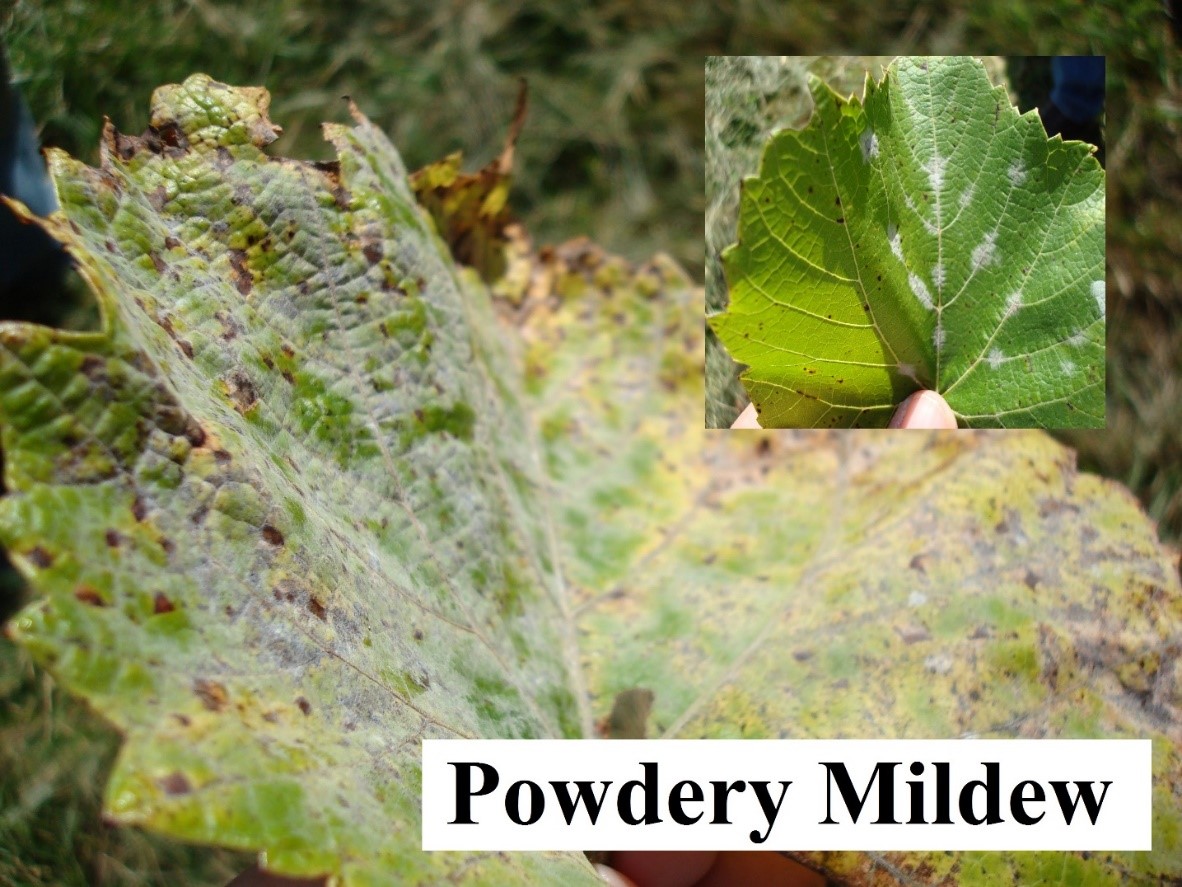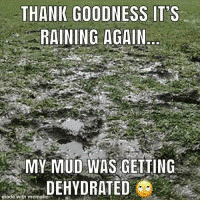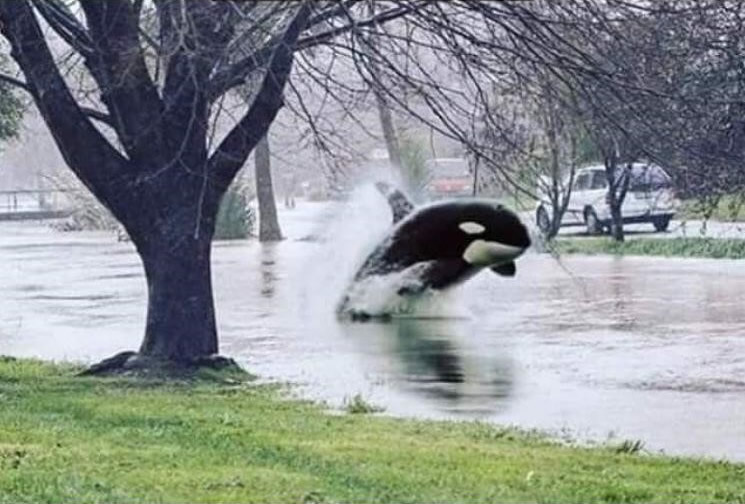Address any questions or comments regarding this newsletter to the individual authors listed after each article or to its editors, Nathan Johanning, 618-939-3434, njohann@illinois.edu or Bronwyn Aly 618-695-6060, baly@illinois.edu. The Illinois Fruit and Vegetable News is available on the web at: http://ipm.illinois.edu/ifvn/. To receive or be removed from email notification of new postings of this newsletter, contact Nathan Johanning or Bronwyn Aly at the phone numbers or email addresses above.
In This Issue:
Upcoming Programs ((listings for beginning and established growers))
Regional Reports ((east central Illinois. St. Louis Metro East (including notes on Bitter rot in apple and powdery mildew in grape), southern Illinois, Dixon Springs))
Fruit and Vegetable Pest Management ((Modified Growing Degree Days from Jan 1 through July 2, New Grape Production Videos available.))
Less Seriously
University of Illinois Extension educators and specialists in fruit and vegetable production and pest management
Check the Illinois SARE calendar for a full list of programs and links for registration.
http://illinoissare.org/ and http://illinoissare.org/calendar.php
Also see the University of Illinois Extension Local Food Systems and Small Farms Team’s website at:
http://web.extension.illinois.edu/smallfarm/ and the calendar of events at http://web.extension.illinois.edu/units/calendar.cfm?UnitID=629.
- 2019 Southern Illinois Summer Twilight Mileur Orchard, Monday, July 8, 2019 at 6 p.m. This orchard operation, established in 1961, has evolved to now grow over 30 varieties of peaches, 9 varieties of apples along with apriums, pluots, and plums. The program will cover production and marketing along with the steps the Mileur’s took to set up their commercial kitchen for making baked goods to sell from their fruit. For more information or to register, please contact Nathan Johanning at njohann@illinois.edu; 618-687-1727 or Bronwyn Aly, baly@illinois.edu; 618-252-8391.
- August 19, 2019 – Jackson County Extension Office to host final Southern Illinois Summer Twilight Meeting
- Meigs High Tunnel Field Day, Thursday, July 18, 2019 10:00 a.m., Purdue Meigs Farm, 9101 S 100E, Lafayette, IN 47909 Topics of the field day include Production of specialty melons in high tunnels; Early detection of bacterial wilt; Impact of crop rotation and rootstock on the resilience of high tunnel tomatoes. Lunch and refreshments are provided. Registration is free, but required. Register here https://purdue.ca1.qualtrics.com/jfe/form/SV_0HXQwDluRiOnwAB For questions please contact Lori Jolly-Brown at ljollybr@purdue.edu or (765) 494-1296
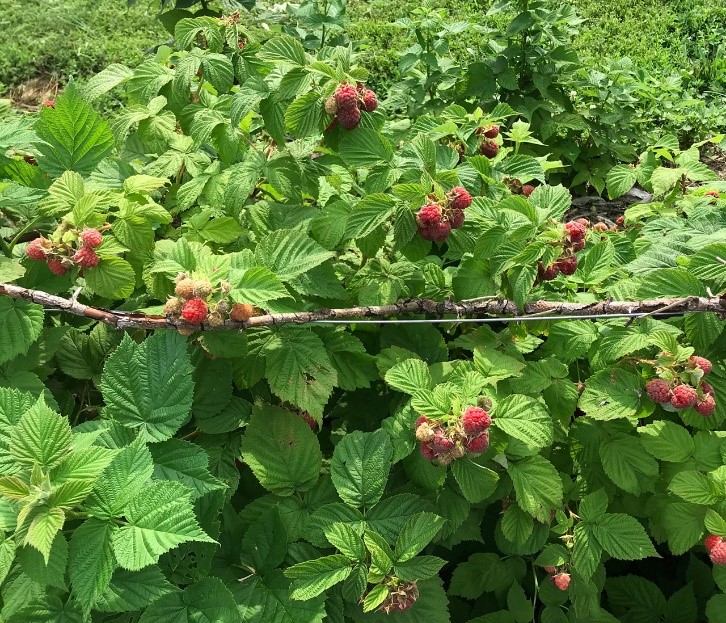
From east central Illinois…Two weeks of warm temperatures and sunny days have made a real difference in the overall appearance and growth of the local vegetables and fruits. Raspberry production has been good. Farmers are dealing with pest and disease issues brought on by the warm, humid weather. Early sweet corn harvest is delayed from previous years and will not be available by July 4 holiday weekend.
Doug Gucker (217-877-6042; dgucker@illinois.edu)
From the St. Louis Metro East… It’s not over yet. Illinois Department of Agriculture (IDOA) has agreed to move its cutoff date for over-the-top dicamba applications from June 30 to July 15 -- but only for June-planted soybean fields. Anyone who planted before June 1 will remain subject to the original planting date plus 45 days after dicamba application, while anyone who planted after the June 1 deadline will be required to adhere to the extended July 15 cutoff date. All I can say is be ever vigilant in making your soybean growing neighbors aware of you. Report suspected drift damage to IDOA immediately, which means you need to be out looking regularly. For reference images, see the Missouri Extension research report “Evaluations of Dicamba and 2,4-D Injury on Fruiting Trees and Various Other Woody Species” at: https://www.greatplainsgrowersconference.org/uploads/2/9/1/4/29140369/2018_gpgc_trees_evaluations_of_dicamba_and_24-d_injury.pdf. If you believe your property has been damaged by pesticide misuse, call the IDOA's Bureau of Environmental Programs at 1-800-641-3934 (voice and TDD) or 217-785-2427 for a complaint form or online at:
https://www2.illinois.gov/sites/agr/Pesticides/Documents/pesticidemisusecomplaintform.pdf. Complaints must be received by the IDOA within 30 days of the incident or within 30 days of when the damage was first noticed. Complaints filed after that will be kept on record, but no administrative action will be taken.
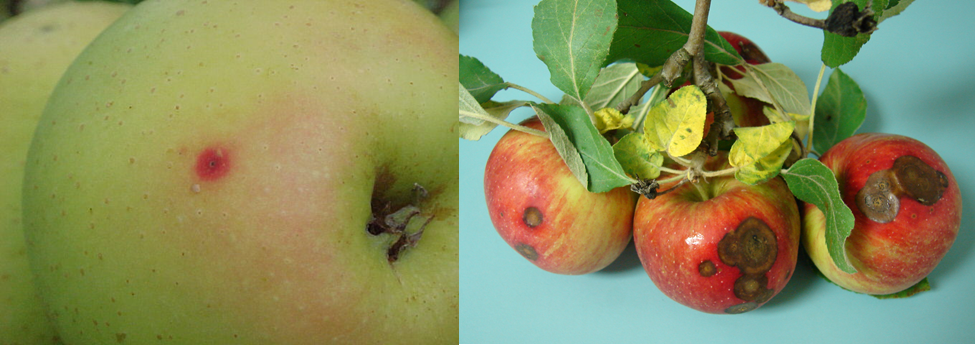
Early symptoms of bitter rot in apple (left) and advanced bitter rot (right). Photo credit: E. Wahle
Bitter rot development in apples has hit its sweet spot, favoring high temperatures (80–90 degrees F) and high relative humidity (80–100%). The fungi is already potentially in your orchard, having survived the winter in dead wood or mummified fruit that were infected during the previous season. I consulted with Dr. Babadoost and he is recommending growers consider [Merivon (5.5 fl oz/A) + captan (5 lb/A)] alternated with [Topsin-M (1 lb/A) + captan (5 lb/A)] at 10-day interval. Maximum per acre per season for Merivon, captan, and Topsin-M are 22 fl oz, 40 lbs, and 4 lbs, respectively. Thorough coverage is essential, so plan on at least 100 gallons of water per acre. Cull infected fruit and mummies as soon as possible, and destroy or bury.
Scout for early signs of powdery mildew development (inset), which can occur on any green tissue, including shoots, leaves, rachis and berries. Advanced powdery mildew infection covering large portions of the vine (above). Photo credit: E. Wahle.
Grape growers are at a critical stage for powdery mildew control. Growers should not assume powdery mildew development stops during rain-free periods like most other grape diseases, when actually just the opposite is true in our humid condition. While you are thinking you are saving money by not adding the fungicide during rain-free periods, powdery mildew is in high gear in your vineyard. The disease is unlike other grape diseases in that it does not require free water (rain) for development, but instead develops in humid conditions (40-100% relative humidity). Left uncontrolled, powdery mildew can result in fruit cracking, predisposing them to other fruit rotting pathogens. For all other grape diseases, mancozeb is the backbone fungicide up to the 66 PHI, then a switch to captan is made to finish the season. Keep in mind, neither mancozeb nor captan provides powdery mildew control. You must tank mix or make a separate pass with a powdery mildew product. Pages 91 and 92 of the 2019-20 Midwest Fruit Pest Management Guide https://ag.purdue.edu/hla/hort/documents/id-465.pdf provides efficacy rating of fungicides for control of grape disease. Make sure you always have an effective fungicide in the tank for what you are controlling.
Elizabeth Wahle (618-344-4230; wahle@illinois.edu)

Newly transplanted pumpkins no-tilled into wheat stubble. Photo: N. Johanning
From southern Illinois... Shortly after the last issue around June 21-22 we got 4” of rain here in Murphysboro. 1.5” of that came on the afternoon of the 21st within 30 minutes of time. On 6/26 we got another 0.7” and its taken almost until now to get that soaked up. We have been in our summer heat and humidity with highs up in the 90s and especially humid the last few days.
We are into peaches, blackberries and the latter part of raspberries. We are into some of the later blueberries like Chandler. Sweet corn, can be found on some early plantings that got in and the same story for many other summer vegetable liks zucchini, cucumbers, tomatoes and green beans and new potatoes.
At home, I just got all of my pumpkin transplants set the first couple days of July. I put them after wheat and with all the rain wheat harvest was a little later than usual and therefore transplanting was a little later than I would like. Personally the 4-5 of July is my “must have transplanted” date for pumpkins and I made that and they are done so I can’t complain. The last acre and a half I put in after some cereal rye that had been sickle mowed down. We also had 0.25” of rain from a pop up storm right before we started in that rye residue. The rain didn’t slow things down too much but with all of the rye residue being wet, it was tough to cut through with the disk openers so it did want to plug up a once in a while. The most issues we had was an area that was mowed the opposite direction to which we planted. Wet residue dead/wet residue from cereal grains is probably some of the tuffest stuff to cut. If the shower hadn’t popped up I don’t think any of it would have been a problem. Everything otherswise planted well and the soil worked well even after the shower.
Nathan Johanning (618-939-3434; njohann@illinois.edu)
From Dixon Springs Ag Center…We have started harvesting tomatoes and bell peppers in the ground beds, and a few of the indeterminate hydroponic tomatoes are starting to ripen as well. Making sprays to keep the gray mold and spider mites at bay. Army worms are coming in by the droves so having to make spray applications for them as well. Fennel has all been harvested, the onions are ready to harvest, hydroponic green beans are being harvested, and strawberries continue to flower (I guess they are the one crop in the high tunnel that has appreciated all of the cooler, cloudy days as they show no signs of slowing down yet). Pollination continues to be a bit of an issue in both tunnels on the tomatoes and peppers, so we are walking through daily with a leaf blower during early afternoon.
Bronwyn Aly (618-382-2662; baly@illinois.edu)
Modified Growing Degree Days (Base 50⁰ F, January 1 through July 2)
Station Location |
Actual Total |
Historical Average (11 year) |
One- Week Projection |
Two-Week Projection |
Freeport |
1042 |
1075 |
1197 |
1355 |
St. Charles |
984 |
1018 |
1133 |
1284 |
DeKalb |
1047 |
1141 |
1201 |
1356 |
Stelle |
1161 |
1235 |
1329 |
1496 |
Peoria |
1301 |
1278 |
1472 |
1645 |
Monmouth |
1226 |
1212 |
1386 |
1546 |
Champaign |
1413 |
1322 |
1589 |
1766 |
Springfield |
1474 |
1424 |
1661 |
1847 |
Perry |
1452 |
1330 |
1624 |
1796 |
Brownstown |
1530 |
1519 |
1719 |
1907 |
Olney |
1582 |
1488 |
1767 |
1950 |
Belleville |
1657 |
1542 |
1846 |
2033 |
Rend Lake |
1723 |
1663 |
1918 |
2112 |
Carbondale |
1704 |
1575 |
1889 |
2074 |
Dixon Springs |
1761 |
1662 |
1949 |
2137 |
Insect development is temperature dependent. We can use degree days to help predict insect emergence and activity. Degree day accumulations calculated using the Pest Degree-Day Calculator
Kelly Estes, State Survey Coordinator, Illinois Cooperative Agricultural Pest Survey (217-333-1005; kcook8@illinois.edu)
New Grape Production Videos
New grape production videos from Elizabeth Wahle, University of Illinois Extension and Brad Taylor, Southern Illinois University-Carbondale can be viewed at:
2019 Grape Vineyard Floor and Canopy Management at Lag Phase https://youtu.be/J7pVDWRzNjU
2019 Grape Crop Estimation at Lag Phase https://youtu.be/trJEbQ8qbDs
Elizabeth Wahle (618-344-4230; wahle@illinois.edu)
https://me.me/i/thank-goodness-its-raining-again-my-mud-was-geiting-dehydrated-9d266f84cdec48f6af4c8a46d65e2e00
https://me.me/i/without-politicians-who-would-water-trees-in-rain-0c0ad7b6450b438e90606a401c1b806e
https://i.redd.it/ffx8kwcufrh21.jpg but slightly modified
MEANWHILE…IN ILLINOIS
University of Illinois Extension Specialists in Fruit and Vegetable Production & Pest Management
Extension Educators – Local Food Systems and Small Farms |
Bronwyn Aly, Gallatin, Hamilton, Hardin, Pope, Saline, and White counties |
618-382-2662 |
baly@illinois.edu |
Katie Bell, Franklin, Jackson, Perry, Randolph, & Williamson counties |
618-687-1727 |
klbell@illinois.edu |
Sarah Farley, Lake & McHenry counties |
847-223-8627 |
sfarley@illinois.edu |
Nick Frillman, Woodford, Livingston, & McLean counties |
309-663-8306 |
frillma2@illinois.edu |
Laurie George, Bond, Clinton, Jefferson, Marion, & Washington counties |
618-548-1446 |
ljgeorge@illinois.edu |
Zachary Grant, Cook County | 708-679-6889 | zgrant2@illinois.edu |
Doug Gucker, DeWitt, Macon, and Piatt counties |
217-877-6042 |
dgucker@illinois.edu |
Erin Harper, Champaign, Ford, Iroquois, and Vermillion counties |
217-333-7672 |
harper7@illinois.edu |
Grace Margherio, Jackie Joyner-Kersee Center, St. Clair County |
217-244-3547 |
gracem@illinois.edu |
Grant McCarty, Jo Daviess, Stephenson, and Winnebago counties |
815-235-4125 |
gmccarty@illinois.edu |
Katie Parker, Adams, Brown, Hancock, Pike and Schuyler counties |
217-223-8380 |
keparkr2@illinois.edu |
Kathryn Pereira, Cook County |
773-233-2900 |
kpereira@illinois.edu |
James Theuri, Grundy, Kankakee, and Will counties |
815-933-8337 |
jtheu50@illinois.edu |
Extension Educators – Horticulture |
Chris Enroth, Henderson, Knox, McDonough, and Warren counties |
309-837-3939 |
cenroth@illinois.edu |
Richard Hentschel, DuPage, Kane, and Kendall counties |
630-584-6166 |
hentschel@illinois.edu |
Andrew Holsinger, Christian, Jersey, Macoupin, & Montgomery counties |
217-532-3941 |
aholsing@illinois.edu |
Extension Educators - Commercial Agriculture |
Elizabeth Wahle, Fruit & Vegetable Production |
618-344-4230 |
wahle@illinois.edu |
Nathan Johanning, Madison, Monroe & St. Clair counties |
618-939-3434 |
njohann@illinois.edu |
Campus-based Extension Specialists |
Kacie Athey, Entomology |
217-244-9916 |
kathey@illinois.edu |
Mohammad Babadoost, Plant Pathology |
217-333-1523 |
babadoos@illinois.edu |


